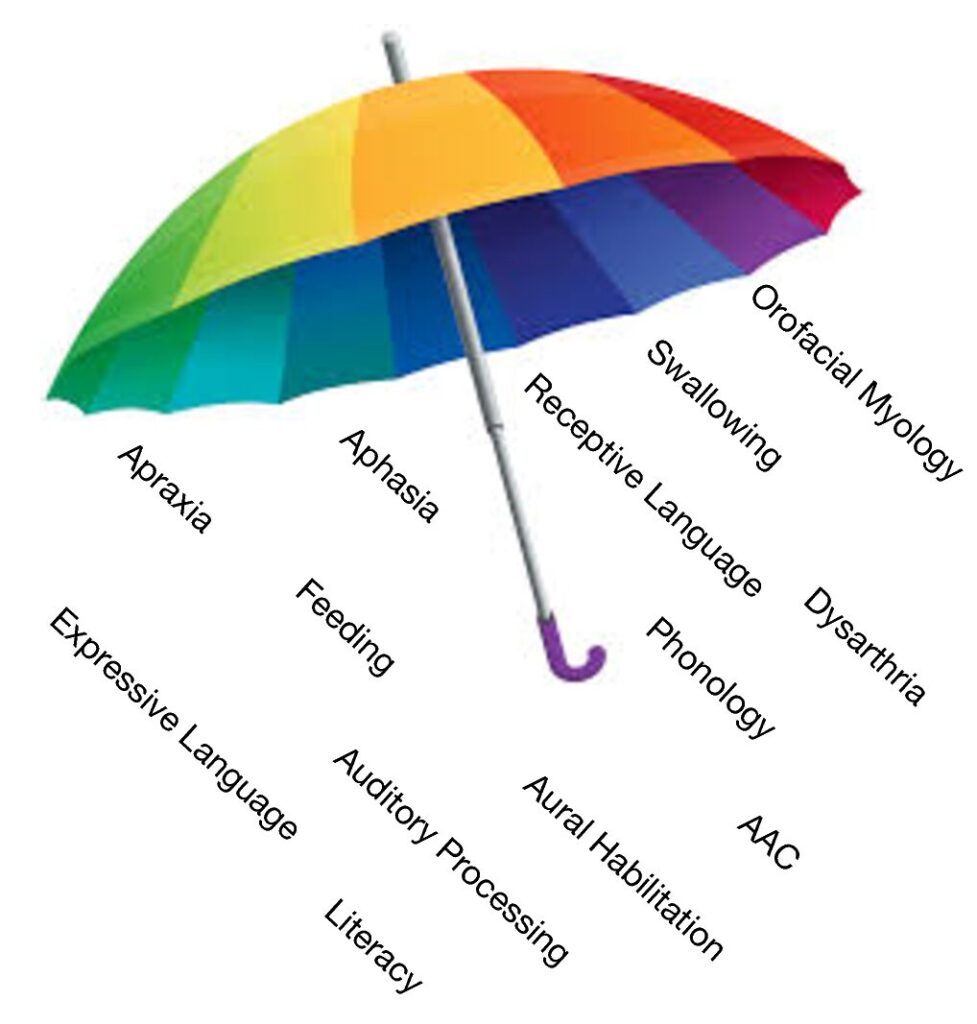Guest Post By Erin Gaul
Orofacial Myofunctional Therapy (OMT)- it’s a mouthful, and likely not a term you come across in everyday life! But it is an interesting topic within speech-language pathology, especially for parents of children who exhibit signs of [something]. In a nutshell, OMT is a special discipline of speech therapy focusing on addressing Orofacial myfunctional disorders (OMDs).
According to the American Speech-Language Hearing Association (ASHA), “OMDs are patterns involving oral and orofacial musculature that interfere with normal growth, development, or function of orofacial structures, or call attention to themselves.”
Examples of OMDs include tongue thrust, mouth breathing, tongue tie, lip tie, cheeks tie, or an open bite. These disorders can affect a child or adult, leading to problems with breathing, swallowing, sleeping, and speaking (as well as dental problems!).
How can OMDs arise? The causes are diverse including both lifestyle based and physiological:
- Thumb or finger sucking
- Extended use of a pacifier and/or sippy cups
- A restricted nasal airway due to enlarged tonsils/adenoids, deviated septum, and/or allergies
- Structural or physiological abnormalities such as tongue tie, lip tie, or cheek tie
- Neurological deficits and developmental delays
- Heredity
OMD evaluation and treatment fall within the scope of a specially trained speech-language pathologist (SLP), usually in concert with a multidisciplinary team that may consist of dentists, dental hygienists, otolaryngologists, lactation consultants, etc.
In a nutshell, the goal of an SLP when it comes to treating OMDs is to achieve and maintain a functional oral resting posture to facilitate adequate breathing, swallowing, speech, and sleep.
The therapy, OMT, will consist of exercises designed to help restore normal strength and coordination of the muscles of the face and tongue. Programs can be intense and require commitment for in-office treatment sessions, often times multiple sessions a week, as well as at-home daily speech exercises.
Because of the focused nature of this type of speech therapy, not every SLP is able to deliver OMT. The field of speech-language pathology is very broad, as illustrated below in the “speech umbrella.”

SLPs would have an impossible job if they were to be experts in all aspect of speech-language pathology! So every speech therapist develops their specialties – and usually develops a network of fellow SLPs to refer clients when other specialties are needed.
Personally, I specialize in motor speech disorders, speech sound disorders, and orofacial myofunctional therapy. If a potential client called my office asking for Augmentative Alternative Communication (AAC) evaluation and treatment, I would refer out.
While it is technically within the scope of any speech therapist, the experience gained and training undertaken by an AAC specialist is much better-suited for that client.
So it’s important to look for an SLP who is well-matched to your / your child’s particular needs. An SLP with OMT training has extensive knowledge of the muscles of the face, mouth, tongue, and subsequent structure and physiology of the orofacial mechanisms.
Here’s a good (and detailed) example of why OMT training matters: A five-year-old’s tongue rests low and forward, sitting outside of his mouth (tongue thrust). He’s being treated by a non-specialized SLP for /s/ placement (and likely, all other alveolar sounds).
Unbeknownst to that SLP, the child has an undiagnosed myofunctional disorder, and that is the root cause for the impaired speech sound production. So, the SLPs instructions such as, “Tongue up! Lift that tongue! Close your teeth and make the snake sound!” likely aren’t going to be successful.
This is because we haven’t treated the underlying issue, the tongue thrust, which affects oral resting posture. We need to first set the stage for proper speech production by teaching the tongue its proper “home,” the alveolar ridge.
We must do this before expecting accurate speech sound production. For any child with a frontal lisp, be it a myofunctional-based tongue thrust or a developmental lisp, I will teach oral resting posture FIRST before speech sound practice.
Orofacial myofunctional therapy sets the stage for successful breathing, sleeping, swallowing, dentition, and speech sound production. If you’re unsure about whether your child has an underlying or unidentified OMD, it’s important to discuss with your SLP.
Erin Gaul MS, CCC-SLP is a speech-language pathologist and owner of Your Speech Path, LLC in Lower Gwynedd, PA. Erin specializes in Childhood Apraxia of Speech, speech sound disorders, and orofacial myofunctional therapy.
